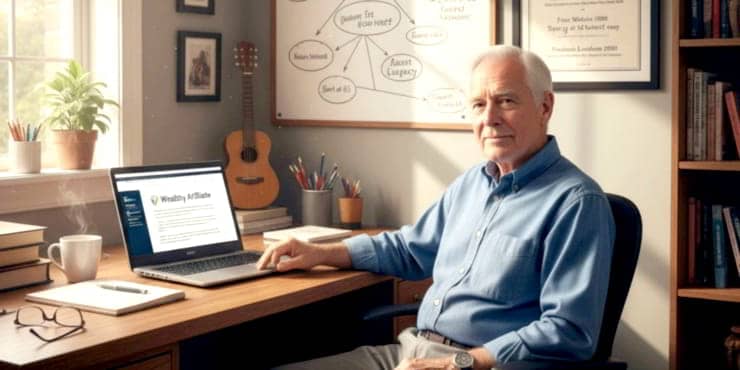Sunk Costs Fallacy: Stop Wasting Time on Dead Ends

Estimated reading time: 6 Min
Keep moving forward. Learn about the sunk costs fallacy, why it holds you back, and how to stop pouring effort into lost causes.
This does happen: Imagine you’re midway through constructing a grand ship, a project born from dreams of navigating the vast, uncharted waters.
You’ve poured not just timber and sail into this vessel, but your heart, soul, and a treasure chest’s worth of gold.
Yet, as the ship takes shape, it becomes clear that the world has moved on to steam and steel.
The romantic era of sailing ships you aimed to revive seems more distant than ever.
Do you press on, or do you abandon the shipyard, your dreams, and your investment?
This tale mirrors a common quandary in both personal and professional realms: the struggle to decide when to discontinue a project.
Central to this dilemma are sunk costs—that’s resources that have already been expended and cannot be recovered.
The decision becomes not just an economic one but a deeply psychological battle against our own nature.
Like a captain making tough calls to ensure the safety and success of their voyage, we’ll learn how to steer our projects and resources towards more promising horizons.
Understanding the Sunk Costs Fallacy
Definition and Examples
Sunk costs are those investments of time, money, or other resources that have been made and cannot be recovered.
It’s the money spent on a non-refundable ticket to a concert you no longer wish to attend or the years devoted to developing software that the market has moved beyond.
The Sunk Costs Fallacy
The sunk cost fallacy occurs when we continue a project or an endeavour simply because we’ve already invested in it, rather than because it promises future value.
It’s a trap that seduces us into spending good money on things that no longer make sense because we don’t want to lose money and we don’t want to watch our investment go to waste.
Psychologically, it’s the sense of not wanting to admit we were wrong, leading us to irrational decision-making.
The Impact of Sunk Costs on Project Continuation
Case Studies
Let’s consider the Concorde project, a supersonic jet that became more about national pride than economic viability.
Despite escalating costs and limited commercial success, the project continued for decades.
Another example is a tech start-up that pours funds into developing a product only to find the market saturated by competitors.
These situations illustrate how sunk costs can cloud judgement and lead to persisting with unviable projects.
Analysis of Impact
The primary consequence of succumbing to the sunk cost fallacy is the continued waste of resources—time, money, and effort that could be better spent elsewhere.
It’s the opportunity cost of missing out on more lucrative or fulfilling ventures because we’re too focused on recouping losses that, in reality, are already gone.
Recognising the Need to Let Go
Identifying Warning Signs
Warning signs that a project may no longer be viable include diminishing returns, escalating costs with no end in sight, and a clear misalignment with current market trends or needs.
It’s like noticing that, despite all efforts, the wind no longer fills the sails of your ship, and you need to start rowing!

Evaluating Project Viability
Objectively assessing a project’s future potential requires stepping back and evaluating it without the emotional baggage of sunk costs.
Tools like cost-benefit analysis, forecasting, and seeking feedback from unbiased third parties can help clear the fog of attachment and provide a clearer picture of whether to continue or cut losses.
As we prepare to dive deeper into overcoming the sunk cost fallacy and making the tough decision to discontinue a project, remember: it’s not just about the resources already spent, but the potential for future gains and the courage to pursue them despite past losses.
Strategies for Overcoming the Sunk Cost Fallacy
Shifting Mindset
The first step in overcoming the sunk cost fallacy is a mental shift.
Imagine that you’re planting a garden. You’ve put in several rosebushes that aren’t thriving, despite your best efforts. Continuing to invest in them simply because you’ve already spent time and money is akin to the sunk cost fallacy.
Recognising that this time and money are gone and cannot influence future growth is vital.
Instead, focus on what can bloom now. This mindset shift, from looking backward to looking forward, is the key.
Decision-Making Frameworks
To assist in making rational decisions free from the emotional weight of sunk costs, several frameworks can be employed.
One such framework is the Decision Matrix, where you list your options and criteria for success, then score each option against these criteria.
This methodical approach helps separate emotions from facts, making it clearer which path has the most potential for success, regardless of past investments.
Seeking External Advice
Sometimes, the best way to gain perspective is to step outside the echo chamber of your own mind.
Consulting mentors, advisors, or even friends who can offer an unbiased view can be enlightening.
They are usually free from the limitations imposed by your investment, allowing them to see things more clearly. It’s like asking a navigator for directions when you’re lost at sea; sometimes, you need someone who isn’t steering the ship to find the way forward.
Making the Decision to Discontinue
Preparing Emotionally and Logically
Deciding to discontinue a project is never easy.
It’s akin to acknowledging that a chapter of your story has ended, and that can come with a sense of loss or failure.
Prepare yourself emotionally by acknowledging these feelings, but also logically by recognising the opportunity for growth and learning.
Reflect on what the project taught you and how these lessons can be applied to future ventures.
It’s not about the end of the road, but rather finding a new direction to travel.
Communicating the Decision
Once the decision is made, communicating it effectively to stakeholders, team members, and supporters is essential.
Be transparent about the reasons for discontinuation, focusing on the forward-looking strategy rather than dwelling on the past.
This communication should be clear, concise, and, most importantly, it should highlight the positive aspects of moving on to new opportunities.
It’s about setting the stage for what’s next, not just closing the curtain on the past.
Managing the Aftermath
After the decision to discontinue has been communicated, managing the aftermath involves tying up loose ends, ensuring that resources are redirected towards more promising endeavours, and learning from the experience.
Conduct a post-mortem analysis to understand what went wrong and what was done right.
This reflective process is not just about closure but about mining the experience for insights that can fuel future successes.
FAQs
How do I differentiate between perseverance and falling for the sunk cost fallacy?
When there is no longer a clear road to success, the sunk cost fallacy is an emotional response to past costs, whereas perseverance is driven by a reasonable belief in future achievement based on data and analysis.
Can sunk costs ever be a valid reason to continue a project?
Generally, decisions should be based on future potential rather than past expenses. However, if past investments lead to a significant breakthrough or learning that is believed to indicate future success, that can be a factor in deciding to persevere, but not normally the sole reason.
Summary
Sunk costs are like anchors that can hold us back from sailing towards more promising horizons.
Overcoming the sunk cost fallacy requires a blend of mental fortitude, strategic thinking, and the willingness to seek and heed external advice.
Remember, the decision to discontinue a project is not an admission of defeat but a strategic pivot towards greater opportunities.
It’s about cutting loose the weight that drags us down and setting sail with lighter, more agile vessels.
So, as you face your next tough decision, remember the lessons of sunk costs, and let them guide you not just to letting go, but to moving forward with confidence and clarity.
Appendix
Further Reading and Resources
- “Thinking, Fast, and Slow” by Daniel Kahneman
A deep dive into how our minds work, including how we make decisions and the psychological biases that affect us. - “The Lean Startup” by Eric Ries
offers insights into efficient business management and the importance of pivoting or discontinuing projects based on feedback and metrics.



![Are Wealthy Affiliate Hubs Revolutionising Website & Content Development In [year]? A futuristic and sleek digital workspace designed for website management and content creation - Wealthy Affiliate Hubs](https://ml0yvzumdtic.i.optimole.com/cb:k6B_.1fa14/w:740/h:370/q:mauto/https://solobusinessmind.com/wp-content/uploads/2024/12/A-futuristic-and-sleek-digital-workspace-designed-for-website-management-and-content-creation-Wealthy-Affiliate-Hubs740x370-O.jpg)


